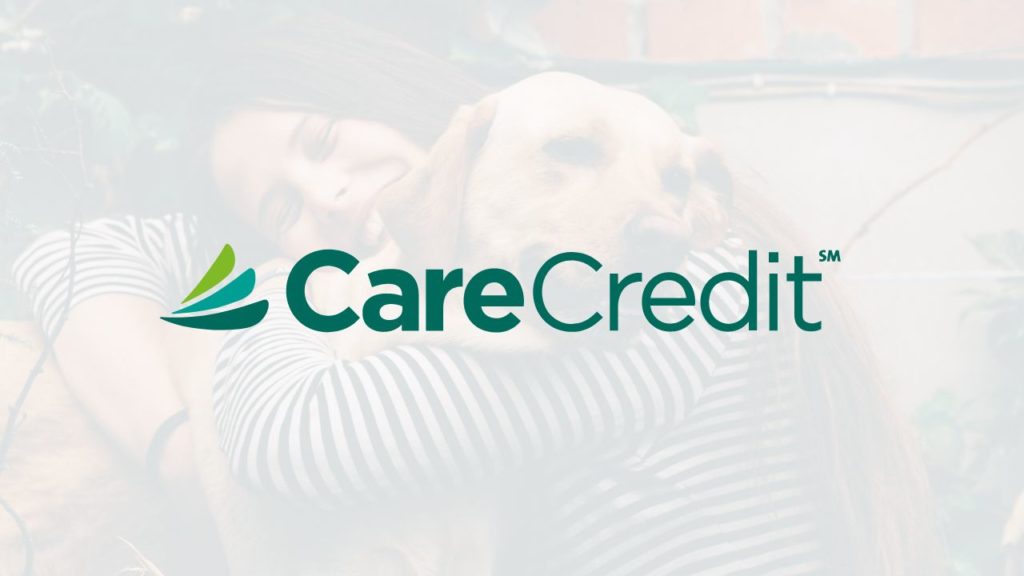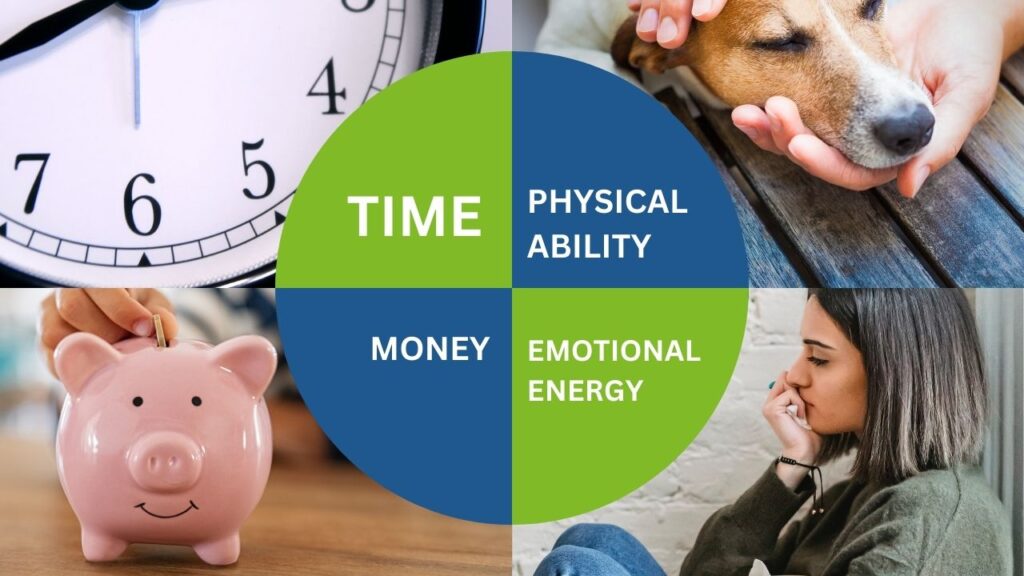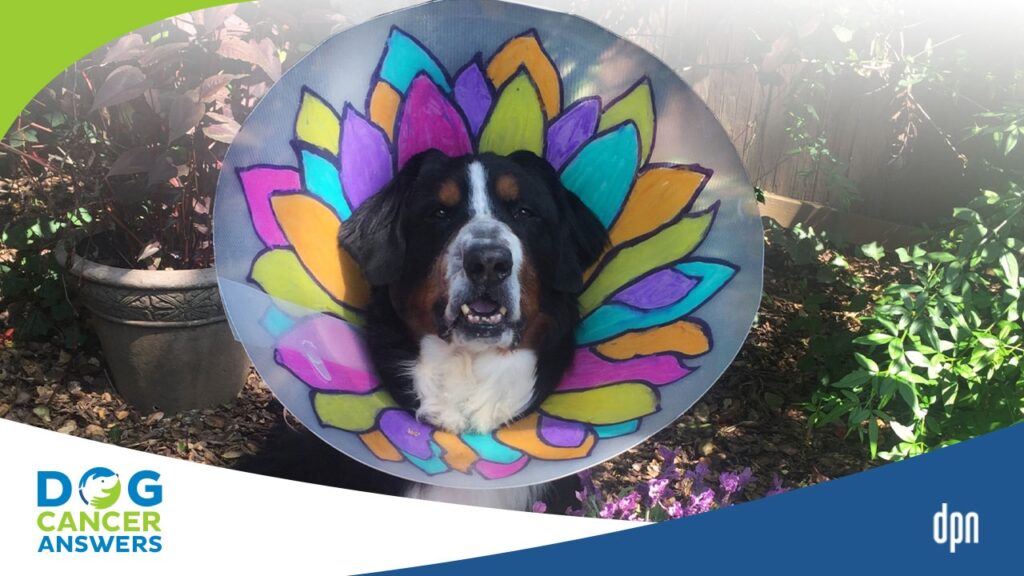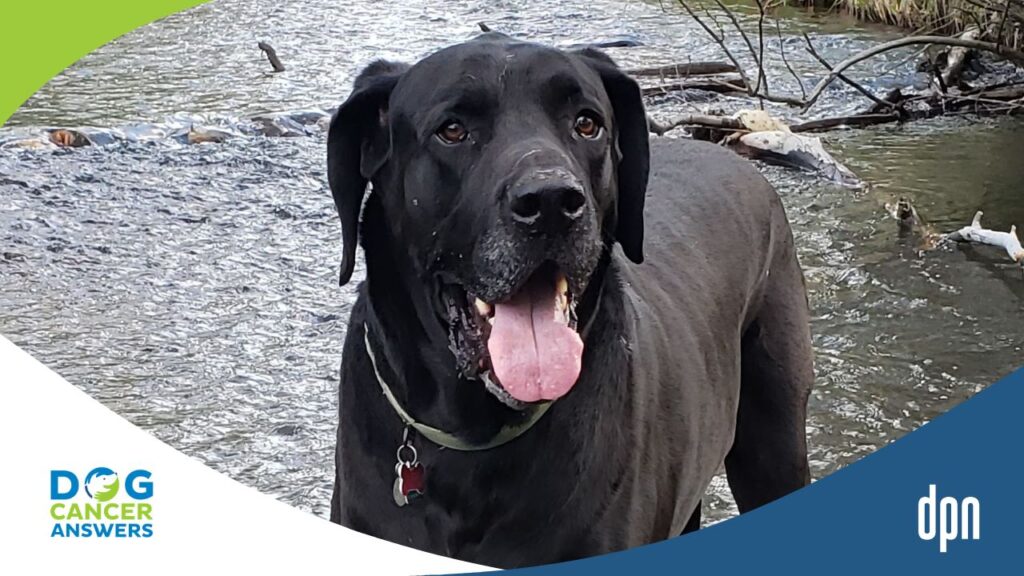EPISODE 231 | RELEASED October 30, 2023
Pet Health Insurance Is Worth It! | Dr. Amanda Hensley
Dr. Amanda Hensley says every pet should have pet insurance, in part because you can “pay ahead” on your likely $10K in unexpected pet health expenses.
SHOW NOTES
Taking care of a dog or other pet adds up over time. In addition to the daily overhead expenses of food and shelter, there’s the yearly expenses of routine vet care. But what about other expenses? Dr. Amanda Hensley estimates that on average, there is about $10,000 in “unanticipated” medical expenses over the course of a lifetime.
Pet insurance can help cover those costs – and is probably going to cost you less over the lifetime of your pet than going without it. So says our guest Dr. Amanda Hensley, who says she will “die on this hill: every pet should have pet insurance.”
Dr. Hensley explains the difference between wellness plans and accident and illness plans, who offers them, how much they cost … and whether you should get one, the other, or both.
Links Mentioned in Today’s Show:
Article about Pet Health Insurance: https://www.dogcancer.com/articles/stress-and-finances/pet-health-insurance/
Healthy Paws Pet Insurance: https://www.healthypawspetinsurance.com/
Fetch Pet Insurance: https://www.fetchpet.com/
Dr. Jules Benson with Nationwide Insurance podcast episodes:
https://www.dogcancer.com/podcast/stats-and-facts/dog-cancer-risk-linked-to-size-dr-jules-benson/
>> Dr. Amanda Hensley: Okay, you have a $10,000 bill tomorrow. How are you going to handle that? Can you handle that?
>> Announcer: Welcome to Dog Cancer Answers, where we help you help your dog with cancer.
>> Molly Jacobson: Hello friend, I’m Molly Jacobson. Today, we’re talking about pet health insurance. What it is, what it covers, what it costs, and whether it’s worth it? To do that, I’m joined by veterinarian and rehabilitation specialist, Amanda Hensley. Dr. Amanda Hensley. Thank you so much for joining us today.
>> Dr. Amanda Hensley: Thanks for having me and call me Amanda, please.
>> Molly Jacobson: Oh, okay. Happy to do that. Well, Amanda, thank you so much for joining us to talk to us about pet insurance. Something that too few Americans have. Am I right?
>> Dr. Amanda Hensley: Absolutely. This is a hill I will die on. And I think everyone should have pet insurance for all your pets. And, uh, it’s definitely a growing industry and something that we’re seeing more and more of in practice. But I think, um, many pets are still underinsured, especially for major accidents and illnesses, which is, you know, main concern with most pet insurances.
>> Molly Jacobson: Yeah. So, is it like human health insurance? Does it cover kind of the gamut of things or is it just for emergencies or how does that work?
Yeah.
>> Dr. Amanda Hensley: So there’s a lot of different options out there. The two main things that pet owners will come across at this point are wellness plans and accident and illness plans. And I’m going to focus more on accident and illness plans, but I’ll talk a little bit about wellness plans just to start us off. These are more typically offered by veterinary practices.
Banfield is the one that I’m most familiar with, and I think probably one of the first companies to offer these wellness plans. And basically, they’re more for covering your preventative care. You pay a monthly fee or an annual fee. And that includes certain services, usually, you know, again, referring to Banfield that covers vaccines, blood work, urinalysis, fecal exams, and a variety of other things, depending on which plan you’re on.
But they are definitely more geared towards the kind of recommended annual things that you expect. Those things can be expensive too. So it’s a good way to, to kind of stay on top of your pet’s preventative care without, you know, having that bigger yearly bill. So you can just pay monthly and have those services included.
Those plans do not typically cover accidents and illnesses. So that’s where the bigger kind of unexpected expenses often come in and the pet insurance plans that I’ll be focusing on mostly today are more for accidents and illnesses for those kind of unexpected expenses that can get really costly really quickly if something happens that that you’re not prepared for or not expecting.
>> Molly Jacobson: Okay. So wellness plans are not necessarily offered by a pet insurance company as much as sort of maybe a large association or a large corporate chain of veterinary practices where they have the scale where they can afford to say, Hey, you pay a monthly fee and you get all of these wellness services throughout the year as necessary for your pet to prevent anything or to catch things early when they’re more treatable.
>> Dr. Amanda Hensley: Correct. I think there are some of the, um, pet insurance companies that are now including preventative services. That’s definitely a newer thing, but my experience has been that the wellness plans are more offered by, by veterinary practices, and it is often the bigger kind of chain type practices, but there are smaller practices that are starting to offer those as well to help pet owners kind of offset some of those costs throughout the year.
>> Molly Jacobson: That’s kind of nice to pay a monthly premium, but then not have a real bill if you’re going in and you’re just getting routine blood work and a physical exam and sort of whatever it is that your dog at that stage of life needs on a wellness basis every year. So it takes the sting out of those vet bills that can confront you when you get them all at once.
>> Dr. Amanda Hensley: Yeah, exactly.
>> Molly Jacobson: That’s really nice. Now you mentioned that the accident and illness plans that are typically from a pet insurance company are for less expected things, but I just want to say that we should all expect that our dogs are at risk for cancer because one out of two dogs over the age of 10 gets it. Right? It’s like we could actually say that’s almost an expected illness at this point in time.
>> Dr. Amanda Hensley: Yeah, absolutely. And that’s, you know, we often refer to it as kind of, um, the unexpected expenses. But when I talk to pet owners, especially those that aren’t really interested in insurance, that’s one of the things that always comes up is just, oh, you know, my dog’s healthy. We’ve never had any issues with our dogs and that kind of thinking, and that’s fantastic that they’ve never encountered one of those things. But at some point, your dog’s going to get sick.
And like you said, cancer is really common. That is something that we see daily in practice, not necessarily serious life threatening cancers, but all kinds of lumps and bumps and you know, anything like that, that, that you’re not necessarily planning ahead for, but we should be thinking about.
>> Molly Jacobson: What other illnesses would you have on your radar for people to be thinking about as their dogs age?
>> Dr. Amanda Hensley: Yeah, so most companies will cover really any kind of accident, any kind of illness. You know, thinking back to my own, uh, previous dogs, I had one that had, um, chronic gastrointestinal issues. So even though it wasn’t, we never really found an underlying cause. He probably just kept eating things outside that he shouldn’t have. And you would end up with.
>> Molly Jacobson: He was just naughty.
>> Dr. Amanda Hensley: Exactly. So.
>> Molly Jacobson: He was a gourmand.
>> Dr. Amanda Hensley: Exactly. So, inevitably you would end up with vomiting and diarrhea and we would be at the clinic taking x-rays and just make sure there’s not a blockage and that sort of thing. So even your kind of routine everyday illnesses are often covered by these plans and are things that, that your dogs’ going to encounter at some point and to, you know, from the veterinary perspective, we often treat these things symptomatically just because we don’t want the owner to have a big bill.
And because they’re not necessarily life threatening, but the standard of care often is to do x-rays or do an ultrasound and just make sure that we’re not missing something. And those things can be costly, and those costs can add up really quickly just for kind of a routine sort of minor illness.
>> Molly Jacobson: Wow. So if you have a puppy who likes to eat gravel and, uh, rusty nails and all of the various kinds of poop out there, and that continues, that might be a dog that’s eligible for a pet insurance plan for later in life when you’re looking like a couple of times a year, you have to take them in for x-rays to make sure that.
>> Dr. Amanda Hensley: Yeah, exactly.
>> Molly Jacobson: Oh, wow. I’d never thought of that. Okay. So how does this work in terms of, is it the same like premiums, deductibles? Like technically how does this work?
>> Dr. Amanda Hensley: So it is similar in a lot of ways to, uh, the health insurance that we’re used to for humans. Luckily, it is typically a lot simpler than our, um, health insurance plans. Typically there is a monthly premium and then you have a deductible. Those are kind of dependent on, uh, your pet’s age, breed. The premiums can vary depending on what level your deductible is. And one of the main differences then is that there is also the reimbursement kind of components.
So most pet insurance plans, then instead of, um, you know, you might go to the doctor, you may or may not have a co-pay or pay something out of the pocket. With pet insurance, you’re typically paying the bill up front and then submitting a invoice. And once the company goes through the invoice, then, uh, they will reimburse you for, you know, whatever coverage your plan includes. And, you know, just like in on the human side, the deductible is kind of how much you’re responsible for paying regardless of what the bill is.
So, most of the plans that I’m familiar with have an annual deductible of, you know, 250 dollars or 500 dollars, for example, and once you reach that deductible, then there’s a percentage that they reimburse you. So again, most plans you can choose 70 percent 80 percent or 90 percent, and your premiums are going to change based on your deductible level and the percentage of reimbursement.
>> Molly Jacobson: Okay. So the more that you ask them to pay on the back end, when you have a problem, the, your premium is probably going to be higher in a month to month basis.
>> Dr. Amanda Hensley: Yes. Typically the higher deductible, typically the lower the premium is just like on, on the human side. And then the reimbursements really, um, kind of the main difference and what makes it much more straightforward. But again, some of them do offer a hundred percent reimbursement. You’re going to pay a lot higher premiums for those.
Then, um, the lower percentage, but most companies I think have options, so you can kind of mix and match so you can kind of find a premium that works for you based on, you know, kind of what you’re comfortable with paying every month or every year. And, uh, depending on your deductible and your level of reimbursement.
>> Molly Jacobson: So when you’re choosing these plans, are they kind of like human? My dad used to be in the insurance industry. I grew up in Connecticut where everybody was in the insurance industry. So I know all the tricks of the insurance industry. One of which is to never offer the same plan as your competitor so that you can never make an apples to apples comparison between insurance plans and insurance providers.
So I’m wondering if something similar happens on the pet insurance side, are they kind of clever about never having their plan exactly match everybody else’s so that you kind of have to hunt and choose?
>> Dr. Amanda Hensley: Yeah, I would say that happens to some degree. I think it’s probably less pronounced than in the, um, insurance industry that we’re used to. I think when I first finished veterinary school, there were only a couple of companies to choose from, and they were not drastically different in coverage and as more and more companies have started and kind of up their marketing and of course there’s, you know, social media and Facebook and everything has gotten more popular.
So people are better connected and talking about, you know, what’s going on. I just had a long conversation with a friend about her pet insurance. And it was very different than what I had for my guys. So I do think that happens to some degree. And there’s a lot of variation and kind of coverages and exclusions and things like that. But I would venture a guess that most of them are fairly similar because the veterinary industry is a little simpler overall than the human healthcare industry.
>> Molly Jacobson: That’s true. So do you have a favorite provider?
>> Dr. Amanda Hensley: So I, I would say I have two. My dogs were always insured with Healthy Paws Pet Insurance and I found them just to be fantastic. I had them for probably about eight years for one dog and 12 or more years for another dog. And I literally never had any issues getting reimbursed and they were very clear about, you know, what was covered, what wasn’t covered. I can’t say enough good things about them. They, like most companies, the premiums did go up every year.
So when our plan would renew as my dogs age, the premiums went up, and it was kind of dramatic over the course of, you know, my last dog’s life over the course of 10 years. But still, I think that, you know, compared to the costs of things that that happened at the end of his life, it was definitely worth it and, and not that much. I do think that that’s something that people are surprised by when the premium goes up every year.
So I think that pet owners should kind of expect that because as your dog ages, you expect them to be more expensive and they’re going to be more prone to getting, you know, chronic diseases and injuries and things like that. But to, to answer your question, I’ve been really happy with Healthy Paws.
And then I have a friend and former client who has Fetch. I think it used to be called Petplan and it’s now called Fetch and they now have free problematic pets that they have all insured and have been very, very happy with their coverage from Fetch and kind of their experience with them.
>> Molly Jacobson: So in terms of getting your dog insured, if my dog already has cancer, do I have any hope of getting that covered?
>> Dr. Amanda Hensley: Probably not the cancer itself. And that is a common question. I am not aware of any companies that cover pre-existing conditions. So something that has already been diagnosed is probably going to be on their list of exclusions.
That being said, there’s a lot of things that come with cancer and cancer treatment. And we’re often talking about older dogs. So if you are, say your dog is, you know, undergoing, um, chemo for a certain type of cancer, but they also have arthritis or are prone to getting, um, GI issues from the chemo, then those things are more likely to be covered.
A lot of companies cover acupuncture and rehab and medications and things like that. So things that aren’t necessarily directly related to the cancer. But that you might be looking into treating your dog for at the same time. So it can still help offset some of those costs for kind of giving your dog the, the best overall treatment for what they have going on.
>> Molly Jacobson: Okay. So that’s really interesting. So if I have a, just a hypothetical dog who has lymphoma, I’ve committed to the CHOP protocol and that’s thousands of dollars. I decide to set up an insurance plan for them. It’s not going to cover the CHOP, but it might cover the rehab that the dog needs as a result of, let’s say, muscle wasting that leads to arthritis, that then they are now like not as mobile as they used to be, that there are other things going on that could get covered.
>> Dr. Amanda Hensley: Yeah, absolutely. And that, of course, is going to vary a bit between companies. I think most companies are pretty cut and dry about what they cover and what they don’t. And, you know, say your dog has lymphoma and that’s considered a pre-existing condition because it’s already been diagnosed. but you get insurance after the diagnosis and then your dog starts to have the muscle wasting and is, you know, diagnosed with arthritis or, you know, whatever.
And, and rehab is recommended, then that typically would be considered a separate condition from the cancer because it is.
>> Molly Jacobson: Yeah.
>> Dr. Amanda Hensley: They’re, you know, of course, interrelated, but it’s, you know, in that case, you’re kind of treating arthritis, not cancer.
>> Molly Jacobson: Right.
>> Dr. Amanda Hensley: So, um, a lot of the companies will still cover other things that are going on at the same time.
>> Molly Jacobson: A car accident, for example.
>> Dr. Amanda Hensley: Exactly. Yeah.
>> Molly Jacobson: That dog could get that the surgery or emergency services covered. Okay. Well, that’s interesting. I’ve always thought, well, once your dog has cancer, there’s really no point, but maybe there really is.
>> Dr. Amanda Hensley: Yeah. And it, you know, I think it all comes down to a pet owner’s kind of financial situation. A lot of folks will put themselves in a bind to treat their, their animals. And if they’re able to, you know, say the, the cancer that you’re treating is curable or the treatment protocol is, you know, short term, but still expensive and you want to make sure that you’re covered for other things, then I do think it’s worth looking into.
>> Molly Jacobson: Yeah. Have you ever done an analysis with your own dogs about what things would have cost if you didn’t have those monthly premiums in place? Like how much money you actually ended up saving over time?
>> Dr. Amanda Hensley: I did of sorts. So my last dog Murphy, he ended up when he was about 12 having a fibroma in his mouth and the treatment for that, it’s, you know, it’s a benign cancer typically, but it’s locally destructive. So, um, you typically have to remove that. And so in his case, you know, he was an older guy. He’d been healthy up to that point.
So there were many times throughout the years that I was paying these premiums and we almost never needed to use insurance. So I was, you know, every year back and forth about, am I going to keep doing this? Or am I going to cancel it? And luckily I kept it because that fibroma, the surgery ended up costing about $7,000 when it was all said and done, they, we had to do a CT scan first to make sure that it was resectable and to kind of plan the surgery and then just saw the diagnostics that go into that.
We typically want to do chest x-rays to make sure he doesn’t have any tumors anywhere else and blood work and just all the things to make sure he’s healthy enough for surgery. So that was about in total $7,000 and I did the math on it and up to that point had paid about 5,000 or less into his insurance plan. And it, I ended up spending out of pocket about 700 on the surgery because he was covered at, at 90 percent reimbursement. And at that point it became very clear that, uh, luckily I had kept that for all that time.
>> Molly Jacobson: Yeah. So you saved over a thousand dollars on cash outlay. And you also had the prepayment of that in a way like that, you didn’t have to do it all at once. It was paid out over time.
>> Dr. Amanda Hensley: Yeah.
>> Molly Jacobson: I’m sure your budget appreciated that instead of one big bill.
>> Dr. Amanda Hensley: Yeah.
>> Molly Jacobson: I mean, this is why people don’t treat things sometimes because they look at it and they say, I cannot afford this.
>> Dr. Amanda Hensley: Exactly. You know, that was just one incident. He also shortly after that had, um, some liver issues. So we did, you know, ultrasound and biopsy and all these things and those added up. And, you know, the last last 2 years of his life, he was very expensive and was fully covered by. So it’s I like the way you phrase that. It’s kind of a pre-payment for these future issues.
>> Molly Jacobson: Let’s assume that things will eventually go wrong and that we need to have a cushion.
>> Dr. Amanda Hensley: Absolutely.
>> Molly Jacobson: Okay, Amanda, let’s just take a quick break here to hear from our sponsors. And when we get back, I want to talk more about what age your dog should be when you get your dog insured.
And we’re back with Dr. Amanda Hensley. So when you get your dog covered young, does that make a difference in your mind?
>> Dr. Amanda Hensley: I think so. One of the challenges with pet insurance is that most companies don’t cover pre-existing conditions. So if you’re starting them as a puppy, which with the dog I was just talking about, he was a young adult when I got him and I got him insured on day one because my previous dog was kind of a health nightmare. So, um, I learned my lesson.
And uh, like I mentioned before, his premiums did go up every year. So when he was uh, I think he was about two when we first insured him and his premiums were something like $27 a month. And when he died at 14 or 15 last year, his premiums were like 130 a month. So it’s a pretty big difference, but that’s over, you know, 12 years.
And, um, and like we just talked about the cost savings was, um, totally worth it with, um, all the things that happened later in life. All that being said, I think in his case, it wasn’t an issue, but a lot of folks will wait until something happens. And then it gets a little bit more complicated at that point, because just like a lot of insurance companies, though, they’re going to look for pre-existing conditions.
So if you sign your dog up when he’s say 2, and he has a 2 year history of having chronic gastrointestinal issues, then they may not cover that in the future. They may consider that pre-existing. And in my, um, experience as a rehab vet, I would see dogs that have, um, ACL tears, uh, really frequently. That commonly happens in both knees and people, you know, the dog tears his ACL, they go in, they realize it’s going to cost 5, 6, $7,000 for the surgery.
So then they want to get insurance. And the company’s kind of caught on or like, no, no, no, this is, this is pre-existing. If it happened in one leg, it’s going to happen in the other one. So I think that starting them young is essential, and I don’t think it’s, I can’t say ever too late, but I don’t think it’s too late at most points in life to start with insurance.
But the earlier you start, the better as far as kind of avoiding those pre-existing things and, and just, you know, some crazy accident happening and then them not being able to be covered.
>> Molly Jacobson: Right. So it sounds to me like, well, my dad would have said insurance is peace of mind.
>> Dr. Amanda Hensley: Yes.
>> Molly Jacobson: You’re paying for peace of mind. So. to get the optimal peace of mind with your dog, would you say the best thing to do is when you get a new dog, whatever age, if you have access to a wellness plan for daily stuff, for everyday stuff, and then get a pet insurance plan for accidents and illnesses, does that sound like a good strategy?
>> Dr. Amanda Hensley: I think so. I think especially if your financial situation is kind of uncertain for whatever reason, I think that, that having both is ideal. You know, I, I never really was interested in the wellness plans personally, because those are expenses that I expect to have with my dogs. And that’s just something that I know they’re going to have vaccines and they’re going to have blood work and that sort of thing.
At this point, I don’t have any pets at the moment, but the next, next dog I get, I know. My little Murphy guy died about a year ago and I have not.
>> Molly Jacobson: Oh I’m so sorry.
>> Dr. Amanda Hensley: Have not gotten any, uh, any new companions yet. I’m sure it’s only a matter of time and, and when I do, I will probably look for either a, a clinic that offers wellness plans or something similar in addition to getting pet insurance because it’s just I don’t know. It’s, I like the, the peace of mind reference. It’s just so nice to like, yes, it’s a monthly bill, but it’s small compared to the every six month bill that you’re going to get or every year bill you’re going to get if you’re staying on top of all the preventative care.
And then I often tell people to consider, you know, when you’re thinking about this, I think a lot of folks have never spent more than a couple hundred dollars at a time on their dog. And that’s just not the world that we live in anymore. So I encourage pet owners to think about it in the sense of like, okay, you have a $10,000 bill tomorrow, how are you going to handle that? Can you handle that?
And think about it and kind of through that lens, because realistically it’s, um, things are very expensive in the veterinary world and it’s, it’s not because, you know, veterinary professionals are trying to get rich or anything. We’re just paying the same prices for equipment and drugs and all those things. So it costs a lot of money to treat your dogs and keep veterinary clinics open. And I, that’s only going to get worse, I imagine in the coming years. So.
>> Molly Jacobson: And I love the idea of saying when you’re getting a dog, think of it as a $10,000 investment that, at some point, you’re going to have to pay $10,000.
>> Dr. Amanda Hensley: Absolutely.
>> Molly Jacobson: And it’ll be all at once at the end of life or it’ll be over time.
>> Dr. Amanda Hensley: Yeah.
>> Molly Jacobson: And that the insurance, if you ensure them young, when they have, ideally, no pre-existing, then all of those things will eventually be covered to a large extent and you’ll end up saving or maximizing that $10,000 outlay.
>> Dr. Amanda Hensley: Yeah.
>> Molly Jacobson: And paying it over time.
>> Dr. Amanda Hensley: Yes.
>> Molly Jacobson: I’ve never thought about it. Do you think that $10,000 is a good sort of budget per dog?
>> Dr. Amanda Hensley: That is a really good question and, and an argument that I have with folks a lot. I just a few days ago, a woman that I know was planning on canceling her insurance for her three dogs because, unfortunately, I can totally understand her frustration. The insurance company is just, um, not reimbursing her as she expected them to and she can’t get an explanation as to why.
So her argument was if she just puts that money in a savings account and has, you know, in three years she would have $10,000, but she has three dogs and you know, I also think that anybody should have that savings for their pets as well, but that can be wiped out in, you know, three or four days if your dog gets hit by a car or just anything crazy that happens.
You know, one of my good friends dog was just, we still have no idea what happened. She was just really sick one day. She was hospitalized for four or five days. She got better and it was $12,000. And she was in the ICU for about five days on fluids and of course getting repeat blood work, and, and we still don’t have any answers. And, um, it was $12,000. And that, it can happen at any moment.
And I think that’s the type of thing that, that folks don’t think about. So I would say at least $10,000, um, is you can kind of.
>> Molly Jacobson: Per animal.
>> Dr. Amanda Hensley: Yes. As you can blow through that really quickly if, if surgery or hospitalization or chemotherapy or some of these more advanced treatments are required.
>> Molly Jacobson: Yeah, tell me another crazy patient story.
>> Dr. Amanda Hensley: Uh, there’s so many. I had, um, a young Australian Shepherd a few years ago that, you know, these are super responsible pet owners, very well trained dog. Never done this before, but for whatever reason, the Amazon guy or somebody knocked on the door. They opened the door right as a bunny ran by.
>> Molly Jacobson: Oh no.
>> Dr. Amanda Hensley: And the dog bolted, ran out into the street, got hit by a car.
>> Molly Jacobson: Oh.
>> Dr. Amanda Hensley: And, she was fine ultimately, but she did have surgery twice. She had pelvic fractures and some nerve injuries. So after two surgeries and, um, this was when I was still in a rehab practice, she was seeing me for rehab twice a week. And, um, it was over about a four month period that we were doing rehab to get her walking again.
And once she started walking again and getting stronger, she went on and did great and made a complete recovery, but that was just shy of $18,000, after all the diagnostics and hospitalization and two major surgeries and then the associated rehab. They were very thankful that they had pet insurance for her.
They covered, I can’t remember what their reimbursement level was, but they ended up paying a very small portion of that out of pocket and luckily, you know, could afford it. But still, you know, $18,000, that’s even your, your portion of that is still a lot. So I think that.
>> Molly Jacobson: My goodness.
>> Dr. Amanda Hensley: Yeah, just, I don’t know. You just have to be prepared for those, those things. We see sad cases all the time of people that simply just can’t afford it. And, um, it breaks our hearts as veterinarians too, when, when we come across these things that are, that are fixable, but we, there’s just not funds to fix it.
>> Molly Jacobson: That must be really heartbreaking. Obviously it’s really heartbreaking for the pet parent, but that must feel very, very stressful for you as a veterinarian.
>> Dr. Amanda Hensley: Yes, it is. And most of us would, would do the job for free or for very little if we could, but it’s just, that’s just not realistic. So we, we see pets all the time that we want to do more for and just can’t because of the expenses associated with it.
>> Molly Jacobson: So that’s why you want people to get pet insurance.
>> Dr. Amanda Hensley: Yes, absolutely. Always.
>> Molly Jacobson: So they don’t have to make that decision based solely on finances.
>> Dr. Amanda Hensley: Yes. Yeah. And you know, back to your reference of, of calling insurance peace of mind, it’s, for me, it’s totally worth it. If you know, 100 bucks a month or 30 bucks a month or whatever it is, to know that if my dog is diagnosed with a terrible type of cancer or has a serious injury or illness, that I can just go for it. I don’t have to, you know, try to find money or try to figure out how I’m going to pay for it.
And, you know, a lot of people will put themselves in bad situations financially to take care of their pets, and we hate to see that happen too.
>> Molly Jacobson: Yeah, I’ve heard from a lot of people over the years who took out a second mortgage or went into credit card debt that they absolutely did not know how they were going to pay back, but they needed to take care of their dog at that moment. And so they took that risk and it’s really, really difficult, whether things work out the way you hope or not. It’s still difficult to face those bills when they come due.
>> Dr. Amanda Hensley: Absolutely.
>> Molly Jacobson: I have a question that might be a little hard for you to answer as the animal lover you are. But what dogs should absolutely be insured from the moment they can be insured, because you just look at them and think that dog’s going to get X, Y, or Z.
>> Dr. Amanda Hensley: Yeah.
>> Molly Jacobson: Like what are the unhealthiest dogs, I guess, is another way of asking.
>> Dr. Amanda Hensley: I would say, um, you know, of course my opinion is all of them, but if I had to pick, we definitely see a lot of issues with, you know, the Doodle breeds, Doodle mixes are increasingly popular and they have all sorts of issues we’re finding with allergies and mobility, joint problems.
They seem to inherit often the bad health issues from both sides, um, and that’s not exclusive to Doodles. That’s really common with a lot of breeds. So I would, you know, if I was picking a group, I would say any, any purebred or purposefully bred dog.
>> Molly Jacobson: Purposefully bred. I like that.
>> Dr. Amanda Hensley: Yeah. And, um, especially those that are, you know, in Colorado, it’s everyone has, you know, a quote unquote adventure dogs, so, um, climbing mountains and things like that. And it’s just, it’s just incredible how dogs will find ways to injure themselves. So any dog that you’re going out, you know, here rattlesnakes are a big issue, so. And everybody’s out hiking all the time, all summer.
So any dog that you’re going to be active with, competing with anything like that, um, athlete dogs and dogs that are super active, I would absolutely recommend it.
>> Molly Jacobson: Yeah. So I was expecting to get one type of dog and you started there, but then expanded. You really think every dog should be fully insured.
Well, I think I understand why after talking to you about this and, and reading your article on DogCancer. com, thank you for writing it.
>> Dr. Amanda Hensley: Yeah. My pleasure.
>> Molly Jacobson: So clearly lays out and has lots of links to all of these providers so people can do their own research. Now, when you’re looking at setting up a new insurance plan, do you recommend people just call the insurance provider and talk to somebody so they can get questions answered and maybe get some insights they wouldn’t get just from the website?
>> Dr. Amanda Hensley: Absolutely.
I think that’s going to be really important because, of course, everything is written and, you know, legally. It’s going to be maybe a little more confusing than it has to be. So, especially finding out about, um, exceptions, like what’s not covered and when and why, and if there’s some companies will put a cap on how much they pay out in a year or over the dog’s lifetime. And there’s all kinds of just little things in some of these policies. So talking to somebody to, to iron out some of those, um, I think would be really helpful.
And I don’t think I’ve ever actually had anybody do this while I was practicing, but I would be thrilled if a client just wanted to sit down and talk about pet insurance and, and have their veterinarian talk to, or a veterinary staff member talk to someone at the company if they have specific questions, ’cause I think that the average pet owner, I think doesn’t really necessarily know what questions to ask or what to expect or what some of these things mean.
So I think talking to your, your veterinary team can be really helpful and uh, talking to somebody at the company because of course websites are, are marketing. So they’re, they’re not going to display the things that they don’t want you to know very prominently, or the, the things that, that they may not want to advertise. So the information should be there, but you probably have to dig for it a lot more. And I think just talking to a person that’s probably going to get you more information a little bit.
>> Molly Jacobson: I think so too. And also asking questions like what is not covered and what is the problem with this? Like why shouldn’t I buy this plan versus that plan? Like what is the real difference here? Because whenever somebody is offering you more than one option, there’s a reason, right? Something’s excluded or something’s included or both.
>> Dr. Amanda Hensley: Yes.
>> Molly Jacobson: And so these are all salespeople, right?
>> Dr. Amanda Hensley: Yes.
>> Molly Jacobson: Their job is to get you to buy and they have to have answers for those questions. And the best time to ask somebody who’s selling you something lots of questions is before you’ve actually put any money in.
>> Dr. Amanda Hensley: Yes, absolutely.
>> Molly Jacobson: They’re most motivated to be helpful and to reward you with the best possible deal.
>> Dr. Amanda Hensley: Yes. Yeah.
>> Molly Jacobson: At that moment.
>> Dr. Amanda Hensley: And that’s a good point too. And something we haven’t touched on yet that I think it’s particularly important when you’re choosing a company to kind of have the whole picture up front, because it’s not that you can’t change plans, but again, pre-existing conditions are likely not covered. So if you’re with a plan for a couple of years and you’re not happy with it and you switch to something, then anything that’s in your dog’s medical record in those few years can be considered pre-existing.
So, you know, it’s hard to know, but I think making the most educated decision that you can early on is really important.
>> Molly Jacobson: Yeah. And that’s a really good point. I know Nationwide has been doing these incredible, they’ve been doing all these white papers. We’ve had Dr. Jules Benson on a couple of times to talk about what they’ve been finding as they look at their millions of claims and they’re looking for patterns and then they’re writing white papers about what happens with dogs in a certain illness and what they’re finding out from their claims.
So Nationwide has been doing all of this analysis of all of their claims and they’re finding these really interesting things that are breed specific or size specific. They did one paper on size. And one of the things they found was that for small dogs, they were more likely than medium size and large dogs to get breast cancer at an early age.
>> Dr. Amanda Hensley: Interesting.
>> Molly Jacobson: And this is really unusual, right? Because small dogs typically get lower rates of cancer.
>> Dr. Amanda Hensley: Right.
>> Molly Jacobson: So as someone who has small dogs, I took note of that, that I’m going to be more aware in the future that my small dogs might be more at risk for breast cancer. Do we know exactly why? There’s some theories, but that’s not what we’re really thinking about. We’re just thinking about those statistics and how to apply them to our individual dogs.
And I just thought that that’s the kind of thing you can ask a pet insurance company and say, what do I need to know about my breed? What do I need to have in my plan about my breed or the size of dog that I have? Like, my dog’s gonna be about 50 pounds. Is there anything I need to plan for? Because then you can make sure that you’re selecting a plan that actually will cover that. When that dog’s young, they wanna sell you that plan now.
>> Dr. Amanda Hensley: Yeah.
>> Molly Jacobson: Because that’s years of income for them.
>> Dr. Amanda Hensley: Yeah, absolutely. Yeah.
>> Molly Jacobson: Um, do you have any other tips, Amanda, about how to get the right provider, how to choose someone trustworthy, and are there any scams people should be looking out for?
>> Dr. Amanda Hensley: Yeah, I don’t know of any scams off hand. I do remember I had a client several years ago that I never was really clear on what exactly their plan was supposed to cover, but they had this really vague kind of sliding scale and somehow every time they submitted a claim, it didn’t fall within the scale that nobody seemed to know or be able to tell them what, what the scale was or what the parameters were.
And that’s always stuck with me because I just, I remember them asking, you know, if I could help and I was looking over their paperwork and it just made no sense whatsoever. And the company is no longer in existence. That’s probably why.
>> Molly Jacobson: Yeah.
>> Dr. Amanda Hensley: But I think anything like that, you can’t make sense of it where it’s just really unclear. And the other thing that I would recommend, and we touched on this a little bit, but um, is just asking real people what their experiences are with different companies, you know, people at the dog park or at your vet clinic or whoever, because of course you can go online and find a million five star reviews for any company that can, you know, find a way to make that happen.
That’s not, I don’t think that’s the best reflection necessarily. So asking, asking people what their experiences have been personally with different companies and, and different illnesses with their dogs, I think is probably one of the best ways to kind of assess whether a company might be right for you and your dog.
>> Molly Jacobson: That’s a really good point. And the veterinary staff is often the people who are actually processing paperwork of all kinds. It’s not necessarily the veterinarian.
>> Dr. Amanda Hensley: Right.
>> Molly Jacobson: It’s the techs or the front office staff or the office manager. So they’ll have good information for you as well. When you’re checking out, you can literally ask that person who’s taking your credit card payment or your check and say, what do you suggest?
>> Dr. Amanda Hensley: Yep. Great resources.
>> Molly Jacobson: Okay. That’s very helpful. Well, thank you so much for joining us today, Amanda. We really appreciate your dedication to dog health and to prevention with pet health insurance.
>> Dr. Amanda Hensley: Thanks for having me on.
>> Molly Jacobson: And thank you, listener, for being here. Check the show notes for Dr. Amanda Hensley’s article about pet health insurance. She has been very active on our excellent site, DogCancer.com, so you’ll find lots of other articles that she’s involved with as well. Follow us and share this podcast, and our website, DogCancer.com with your friends and the veterinary staff at your vet hospital.
I’m Molly Jacobson, and for all of us here at Dog Podcast Network, I’m wishing you and your dog a warm, aloha.
>> Announcer: Thank you for listening to Dog Cancer Answers. If you’d like to connect, please visit our website at DogCancer.com or call our listener line at (808) 868-3200. And here’s a friendly reminder that you probably already know, this podcast is provided for informational and educational purposes only. It’s not meant to take the place of the advice you receive from your dog’s veterinarian.
Only veterinarians who examine your dog can give you veterinary advice or diagnose your dog’s medical condition. Your reliance on the information you hear on this podcast is solely at your own risk. If your dog has a specific health problem, contact your veterinarian. Also, please keep in mind that veterinary information can change rapidly, therefore, some information may be out of date.
Dog Cancer Answers is a presentation of Maui Media in association with Dog Podcast Network.
Hosted By
SUBSCRIBE ON YOUR FAVORITE PLATFORM
Topics
Editor's Picks
CATEGORY











